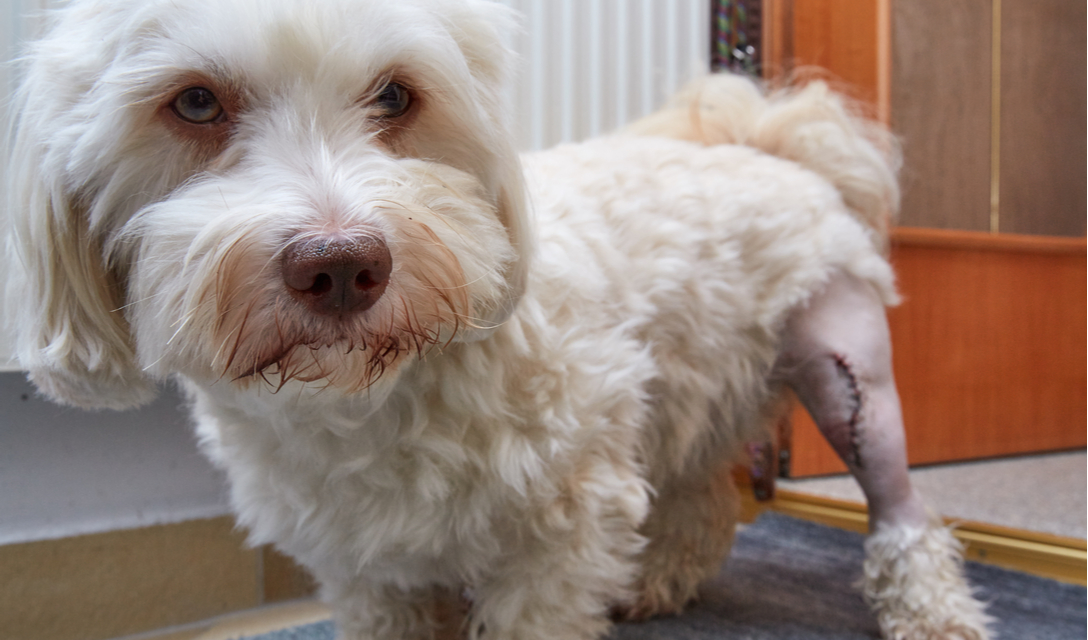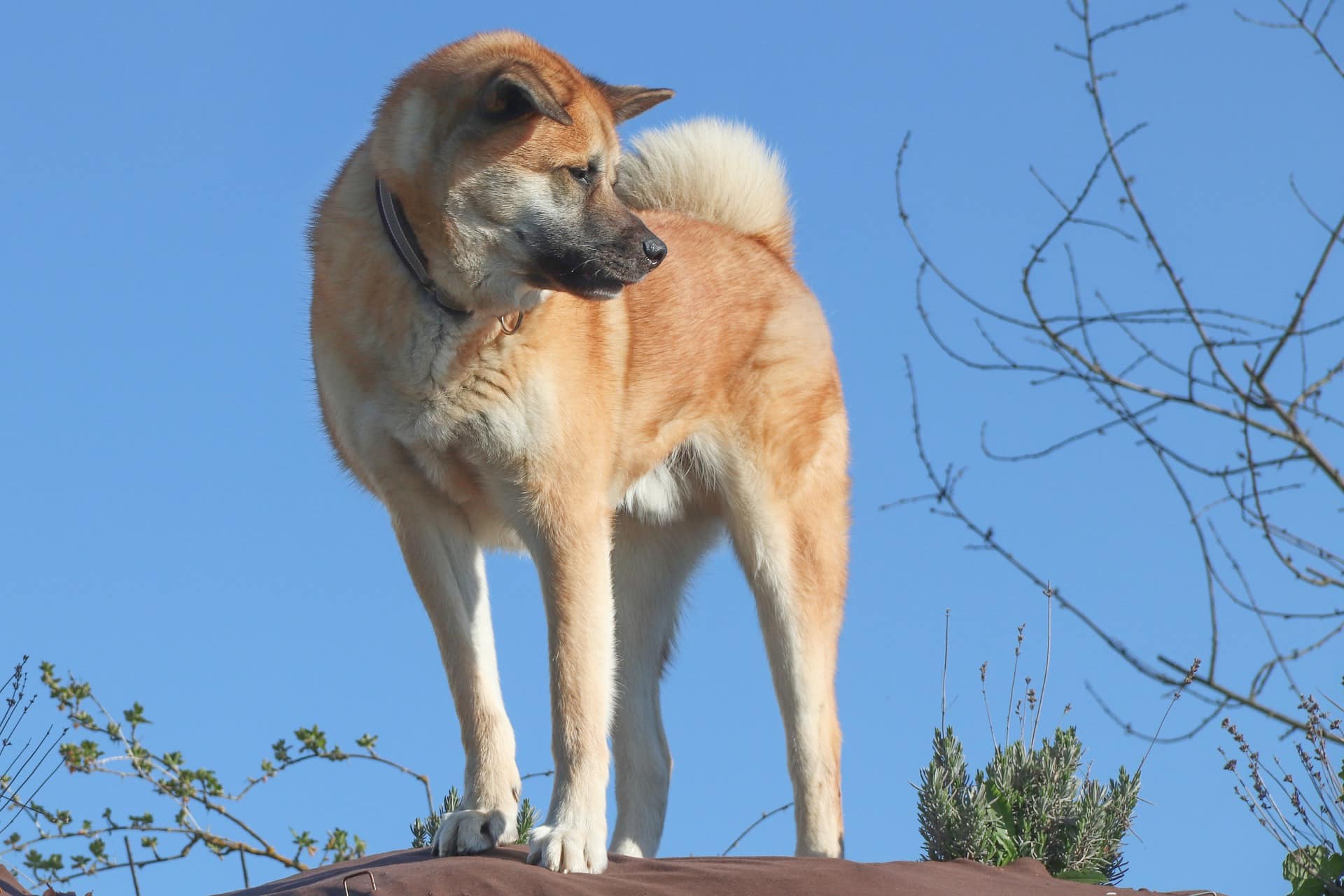Patella dislocation in dogs
The luxation of the patella is a frequent pathology in dogs, which is mainly seen in small breed dogs. It consists of a displacement of the patella bone that comes out of its housing.
Since this phenomenon can be particularly painful for the animal, it is important to know how to recognize it in order to have it treated quickly. In particular, small dogs that are prone to this condition should be closely monitored. In our article today, we tell you all about the luxation of the patella in dogs, its causes, its symptoms and the treatments to correct it.
What is patella luxation in dogs?
Patellar luxation is an orthopedic disorder that occurs when the patella comes out of its socket, which impairs the dog's mobility. The patella is a small bone that is located in the tendon connected to the thigh muscle, the quadriceps, at the knee joint, also called the stifle in dogs - and other quadrupeds.
This small bone, also known as the patella, maintains the structure of the joint and ensures the cohesion of the articular movement by sliding to the rhythm of the flexions and extensions of the knee. In case of dislocation of the patella, the bone dislocates, sliding out of its socket, the trochlea. The movement of the knee is then hindered, and sometimes extremely painful.
Patella dislocation can be unilateral or bilateral, i.e. concerning one or both knees, permanent or intermittent, and coercive or not, the bone can be put back in place and remain there, or not. Whatever its degree of severity, dislocation of the patella favors the development of osteoarthritis of the knee when it is prolonged or recurs.
It is a frequent orthopedic condition, especially in small breed dogs that are predisposed to a particular hereditary form. There is also a congenital form in some puppies of dwarf breed. The degree of severity of patella luxation is categorized into four grades based primarily on the severity of its symptoms.
Grade I patella luxation is very occasional and coercive. At this stage, the bone spontaneously returns to its place and remains there, without the need for veterinary intervention. Grade II patella dislocation is intermittent, recurring more often than Grade I. It remains coercible or reducible (can be put back in place with manipulation).
In Grade III, the patella dislocation is permanent. It remains reducible, but is not coercible, as it does not stay in place once pushed back into its socket. Finally, Grade IV patella dislocation is permanent, and is neither coercible nor reducible. It is often complicated by a deformity of the joint.

Causes of patella luxation in dogs
Patella luxation in dogs is often a multifactorial pathology, which can be caused by different phenomena. However, in most cases, a genetic involvement is observed. In fact, it is frequently caused by an abnormality in the development of the knee joint, which is characterized by both a misalignment of the structure (femur, patella and tibia) and a lack of depth of the trochlea, the fossa housing the patella.
Deformities of the femur (thigh bone), which has an abnormal angulation that causes abnormal movements, often in rotation, may also be involved. The tibia (leg bone) may also be affected by plateau deformities that make the joint unstable.
Poor development of ligaments and tendons, including hyperlaxity, can also affect the maintenance of the joint complex. These developmental abnormalities are highly heritable, which is why certain breeds are clearly predisposed to patella luxation.
Among the dogs most commonly affected by this disorder are the Akita Inu, Bichon Frise, Poodle, Chihuahua, Cavalier King Charles, Cocker Spaniel, Lhasa Apso, Pomeranian and Yorkshire, to name only the best known. In principle, a dog diagnosed with a luxated patella, regardless of its grade, should be excluded from breeding to avoid the risk of transmitting this anomaly to its offspring, thus spreading the disease in the canine population.
The existence of concomitant favouring factors to the identified genetic predispositions is also suspected. Overweight, in particular, which leads to an increased stress on the joints, tends to favor the development of patella luxation. Lack of exercise can also lead to weakness of the stifle muscles and tendons.
Conversely, too much physical exercise during the growth period, especially vertical jumps, may cause joint deformities that can lead to patellar dislocation. Finally, some dislocations of the patella may be caused by trauma (shocks, falls, etc.) or false movements. These dislocations, called acquired dislocations, are often reducible and non-recurrent.
Symptoms of patella luxation in dogs
The symptoms of patella luxation in dogs vary significantly depending on the grade of the disease. In genetic or congenital conditions, the damage is often bilateral. In Grade I or II dislocation, the owner usually observes mild to moderate lameness, often intermittent.
The dog may start to walk on three legs, hop around, or adopt a jerky, unsteady, painful, and visibly asymmetric gait. Grade III and IV dislocations usually leave no room for doubt, as the lameness is permanent and marked.
The dog, in pain, will tend to avoid exercise and be more sedentary than usual. He may be visibly depressed and sad. In addition to lameness, a typical symptom of patella luxation, and signs of discomfort that may reflect the dog's suffering, the animal may tend to shake or stretch its leg strangely, as if trying to put its patella back in place.
Finally, in puppies with severe congenital patella luxation, a deformity of the hind limbs is sometimes observed. The young dog's legs are bowed, and the knee may even appear to be "inverted" in large breeds.

Treatment and prognosis of patella luxation in dogs
Treatment of patella dislocation in dogs will depend on the grade of the dislocation. A Grade I dislocation usually resolves on its own, although manipulation may be performed to reset it. In the case of a Grade II patella dislocation, manipulations often become necessary, and completely indispensable in Grade III.
In the case of Grade IV patella dislocation, which is the most severe, surgical treatment is unavoidable to put the patella back in its place and avoid regular recurrences. In general, surgery is highly recommended from Grade II onwards to avoid recurrences that could harm the animal's quality of life and the health of the joint in the long term, especially by causing osteoarthritis.
The preferred surgical treatment depends on the causes identified. Soft tissue surgery can tighten tendons and ligaments when hyperlaxity is involved. The operation may also aim to deepen the trochlea, which is often too small to house the patella.
Finally, in case of malformation of the tibia or femur, the bone can be reworked to provide better stability to the joint. In general, the prognosis for a dog undergoing orthopedic surgery to correct a dislocated patella is very good, especially in smaller dogs. It is estimated that 90% of dogs that undergo surgery return to a completely normal life.
The prognosis is more guarded for large dogs, in whom the patella luxation is often concomitant with other orthopedic disorders, such as hip dysplasia or long bone deformities.
FAQ
How do I know if my dog has a luxated patella?
Patella dislocation undoubtedly leads to a limp, sometimes discreet, but often visible. This lameness can be intermittent or permanent. The dog may also be seen shaking or stretching its leg, as if it were trying to move its patella back into place.
My dog has a luxated patella, what should I do?
If you suspect that your dog has a luxated patella, it is essential to take him to a veterinarian. This condition can be very painful for the animal and usually requires surgery to be permanently treated.
Can patella luxation be treated in dogs?
Yes, there are different surgical treatments, generally very effective, to cure patella luxation in dogs. Surgery is the only possible treatment, and it is strongly recommended for Grade II luxation to avoid complications and to allow the dog to regain a good quality of life.
Which dogs are prone to patella luxation?
Small breed dogs, and more precisely dwarf breeds, are predisposed to patella luxation. The Akita Inu, Bichon Frise, Poodle, Chihuahua, Cavalier King Charles, Cocker Spaniel, Lhasa Apso, Pomeranian and Yorkshire are overrepresented.
However, this condition can also affect large dogs, especially since it is not always genetic in origin, but can also be the result of trauma. Patella luxation is an orthopedic disorder that can literally poison the lives of our four-legged friends when not properly treated.
Fortunately, it can often be cured permanently with the help of a well performed surgical procedure. If you notice a lameness in your little dog, especially if he is one of the dogs at risk, it is important not to neglect it, even if it is discreet and intermittent.
A healthy lifestyle, aimed at limiting excessive weight gain, is also highly recommended to keep your furry friend safe from this painful condition.

